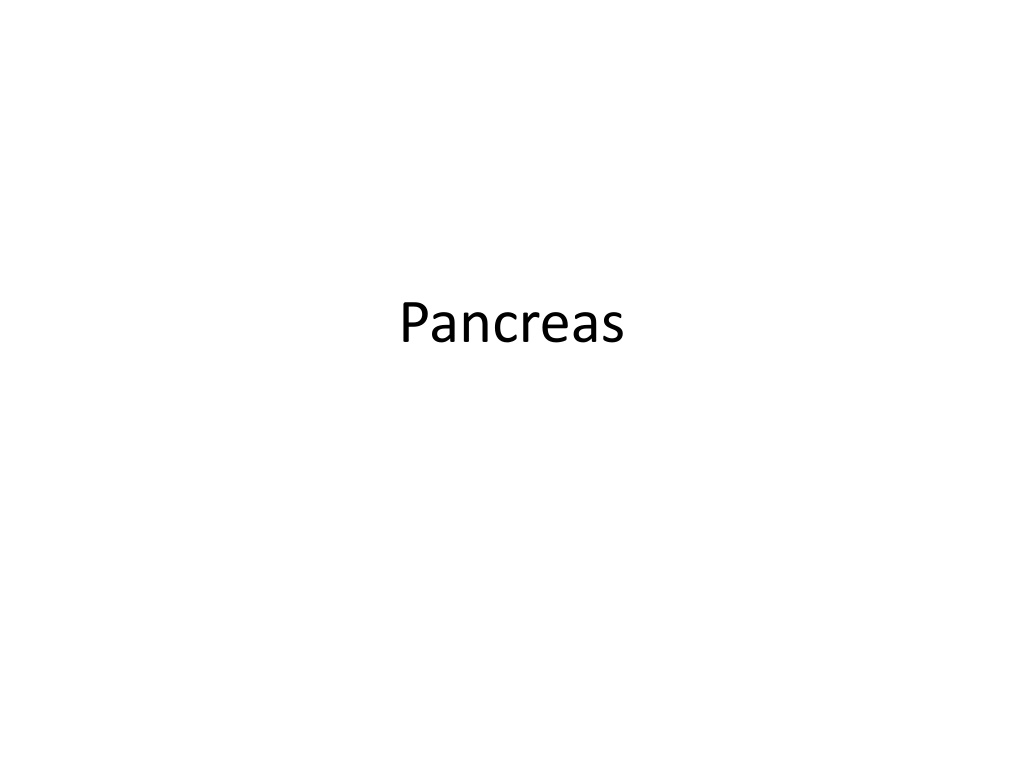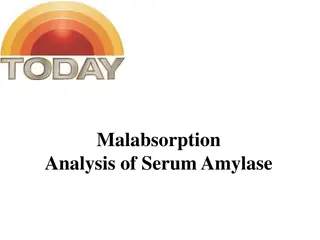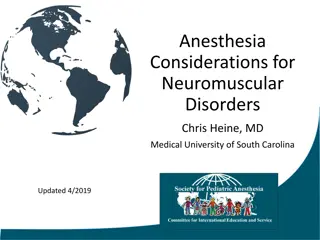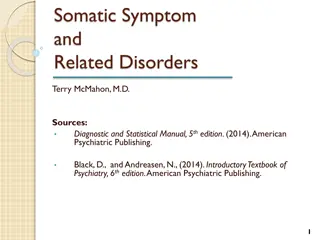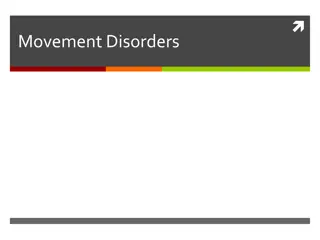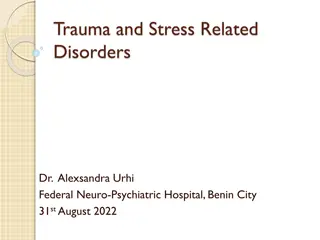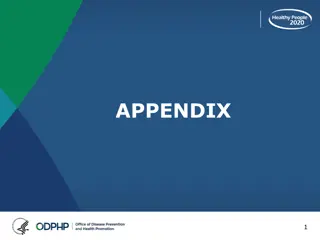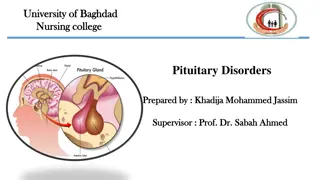Pancreatic Disorders and Management Options Overview
Tropical Pancreatitis, genetic mutations, and pancreatic cyst management are discussed in the content alongside a clinical case of a 65-year-old man with a pancreatic mass. Topics include Tropical Pancreatitis features, differential diagnosis of pancreatic masses, and management options for chronic large pancreatic cysts. Illustrations and questions related to pancreatic conditions are also included.
Download Presentation

Please find below an Image/Link to download the presentation.
The content on the website is provided AS IS for your information and personal use only. It may not be sold, licensed, or shared on other websites without obtaining consent from the author. Download presentation by click this link. If you encounter any issues during the download, it is possible that the publisher has removed the file from their server.
E N D
Presentation Transcript
All of the following are true about Tropical Pancreatitis EXCEPT: A. It is common in adolescent B. It is associated with protein-caloric malnutrition C. It has a familial pattern D. Frequently leads to chronic pancreatitis E. It is not associated with diabetes
All of the following are true about Topical Pancreatitis EXCEPT: A. It is common in adolescent B. It is associated with protein-caloric malnutrition C. It has a familial pattern D. Frequently leads to chronic pancreatitis E. It is not associated with diabetes
Tropical panreas Genetic mutation of the pancreas secretory trypsinogen inhibiter or SPINK1 gene Abd pain & DM Pancreatic duct stone Risk of cancer Ttt: pain + enzymes
Which of the following is the least faverable management option for a chronic large pancreatic cyst: A. Endoscopic transpapillary drainage using stent B. CT-guided pig tail catheter C. Open Roux-en Y cystojejunostomy D. Laparascopic cystogastrostomy E. Endoscpic transgasric cystogastrostomy
Which of the following is the least faverable management option for a chronic large pancreatic cyst: A. Endoscopic transpapillary drainage using stent B. CT-guided pig tail catheter C. Open Roux-en Y cystojejunostomy D. Laparascopic cystogastrostomy E. Endoscpic transgasric cystogastrostomy
A 65 year old man present with persistent skin rash over the lower abdomen and perineum with mild left upper quadrant pain. Serum glucose 160 mg/dl. Ct showed a large mass in the tail of pancreas. Most likely Dx: A. VIPoma B. Glucagonoma C. Somatostatinoma D. Gastrinoma E. Insulinoma
A 65 year old man present with persistent skin rash over the lower abdomen and perineum with mild left upper quadrant pain. Serum glucose 160 mg/dl. Ct showed a large mass in the tail of pancreas. Most likely Dx: A. VIPoma B. Glucagonoma C. Somatostatinoma D. Gastrinoma E. Insulinoma Necrolytic Migratory Erythema
45 yo woman presents with RUQ pain and jaundice. Greasy floating stool. US showed GS and pancreatic head mass. Most likely Dx: A. VIPoma B. Glucagonoma C. Somatostatinoma D. Gastrinoma E. Insulinoma
45 yo woman presents with RUQ pain and jaundice. Greasy floating stool. US showed GS and pancreatic head mass. Most likely Dx: A. VIPoma B. Glucagonoma C. Somatostatinoma D. Gastrinoma E. Insulinoma Proximal Pancreas Metastatic at Dx Dx >>> elevated serum somatostatin
The most common functional pancreatic endocrine neoplasm: A. VIPoma B. Glucagonoma C. Somatostatinoma D. Gastrinoma E. Insulinoma
The most common functional pancreatic endocrine neoplasm: A. VIPoma B. Glucagonoma C. Somatostatinoma D. Gastrinoma E. Insulinoma Whipple triad High fasting blood sugar Low C peptide Even distribution 90% benign TTT>> enucleation
Octereotide scanning is most usaful for localization of which of the following: A. VIPoma B. Glucagonoma C. Pancreatic polypeptide-secreting tumor D. Gastrinoma E. Insulinoma
Octereotide scanning is most usaful for localization of which of the following: A. VIPoma B. Glucagonoma C. Pancreatic polypeptide-secreting tumor D. Gastrinoma E. Insulinoma are large bulky >> CT 40% of insulinoma have no sufficient somatostatin receptors Detect smaller than 1 cm Somatostatinoma and VIPoma
A 35 yo female present with episodic sever watery diarrhea. Stool cultures are negative. O/E a mass is palpable in the epigastric and RUQ. CT showed large bulky pancreatic mass with extention into the SMV and adjecnt organs. Best pallitive Mx: A. Octreotide B. Streptotazocin C. Embolization D. Chemotherapy E. Radiation therapy
A 35 yo female present with episodic sever watery diarrhea. Stool cultures are negative. O/E a mass is palpable in the epigastric and RUQ. CT showed large bulky pancreatic mass with extention into the SMV and adjecnt organs. Best pallitive Mx: A. Octreotide B. Streptotazocin C. Embolization D. Chemotherapy E. Radiation therapy VIPoma Tail Metastsis at Dx
All of the following are true regarding alcohol EXCEPT: A. It relaxes the sphincter of Oddi B. It has metabolic toxins to the pancreatic acinar cells C. It increases pancreatic duct permeability D. It transiently decreases pancreatic blood flow E. It inappropriately activates trypsin
All of the following are true regarding alcohol EXCEPT: A. It relaxes the sphincter of Oddi B. It has metabolic toxins to the pancreatic acinar cells C. It increases pancreatic duct permeability D. It transiently decreases pancreatic blood flow E. It inappropriately activates trypsin Spasm
Which of the following is true regarding panceatogenic (type3) diabetes: A. Ketoacidosis is common B. The diabetes is easily controlled C. Peripheral insulin sensitivity is decrease D. Glucagon and pancreatic polypeptide (PP) levels are low E. Hyperglycemia is usually sever
Which of the following is true regarding panceatogenic (type3) diabetes: A. Ketoacidosis is common B. The diabetes is easily controlled C. Peripheral insulin sensitivity is decrease D. Glucagon and pancreatic polypeptide (PP) levels are low E. Hyperglycemia is usually sever
All of the following are true regarding PP EXCEPT: A. Proximal pancreactomy is associated with a greater PP deficiency than distal pancreactomy B. Patients with PP producing tumor present with sever hypoglycemia C. PP regulates expression of the hepatic insulin receptor gene D. PP deficiency corelates with sverity of chronic pancreatitis E. It is secreted by F cells
All of the following are true regarding PP EXCEPT: A. Proximal pancreactomy is associated with a greater PP deficiency than distal pancreactomy B. Patients with PP producing tumor present with sever hypoglycemia C. PP regulates expression of the hepatic insulin receptor gene D. PP deficiency corelates with sverity of chronic pancreatitis E. It is secreted by F cells
Which is true regarding pancreatic divisum: A. The duct of Santorini ends in a blind bouch B. The inferior portion of the pancreas drains through the duct of Santorini C. The majority of the pancreas drains through the duct of Wirsung D. The duct of Santorini drains through the major papilla E. The duct of Santorini and Wirsung fail to fuse
Which is true regarding pancreatic divisum: A. The duct of Santorini ends in a blind bouch B. The inferior portion of the pancreas drains through the duct of Santorini C. The majority of the pancreas drains through the duct of Wirsung D. The duct of Santorini drains through the major papilla E. The duct of Santorini and Wirsung fail to fuse
The preferred definitive treatment of recurrent acute pancreatitis d.t. pancreatic divisim is: A. Lateral pancreaticojeunostomy (Puestow procedure) B. Pancreaticoduodenectomy (Wipple) C. Minor papilla sphincterotomy D. Major papilla sphinctrotomy and pancreatic ductal septotomy E. Distal pancreatictomy
The preferred definitive treatment of recurrent acute pancreatitis d.t. pancreatic divisim is: A. Lateral pancreaticojeunostomy (Puestow procedure) B. Pancreaticoduodenectomy (Wipple) C. Minor papilla sphincterotomy D. Major papilla sphinctrotomy and pancreatic ductal septotomy E. Distal pancreatictomy
Insulinomas A. Usually require selective venous sampling for localization B. Are more common in the head of the pancreas C. Are usually benign D. Are treated with anatomic pancreactomy
Insulinomas A. Usually require selective venous sampling for localization B. Are more common in the head of the pancreas C. Are usually benign D. Are treated with anatomic pancreactomy 90% spradic 10% MEN 1
Which of the following is the most common presenting symptom in patients with Somatostatinoma: A. Cholelithiasis B. Constipation C. Hypoglycemia D. Hypocalcemia
Which of the following is the most common presenting symptom in patients with Somatostatinoma: A. Cholelithiasis B. Constipation C. Hypoglycemia D. Hypocalcemia Diabetes steatorhea
What percentage of patients with gastrinoma have a MEN1 syndrome: A. 5% B. 10% C. 25% D. 40%
What percentage of patients with gastrinoma have a MEN1 syndrome: A. 5% B. 10% C. 25% D. 40%
The majority of gastrinoma are found in : A. Triangle of Calot B. Passaro s triangle C. Body of the pancreas D. Tail of the pancreas
The majority of gastrinoma are found in : A. Triangle of Calot B. Passaro s triangle C. Body of the pancreas D. Tail of the pancreas
For VIP-secreting tumor all are true EXCEPT: A. Diarrhea unresponsive to anti-diarreal agents B. Diarrhea that persists during fasting C. Hypokalemia D. Sever metabolic alkalosis
For VIP-secreting tumor all are true EXCEPT: A. Diarrhea unresponsive to anti-diarreal agents B. Diarrhea that persists during fasting C. Hypokalemia D. Sever metabolic alkalosis
During abdominal exploration after RTA, a deep laceration across the body of the pancreas with disruption of the pancreatic duct was discovered, Mx is external drainage and: A. Direct repair of the duct B. Distal pancreatictomy C. Implantation of the pancreas into the posterior wall of the stomach D. Lateral pancreaticojejunostomy
During abdominal exploration after RTA, a deep laceration across the body of the pancreas with disruption of the pancreatic duct was discovered, Mx is external drainage and: A. Direct repair of the duct B. Distal pancreatectomy C. Implantation of the pancreas into the posterior wall of the stomach D. Lateral pancreaticojejunostomy
Pancreatograph is performed in 54 y o m, alcoholic with chronic pancreatitis. The study showed a chain of lakes pattern, with areas of ductal dilatation joined by areas of ductal stenosis. Mx: A. Cholecystectomy with CBD exploration B. Cholecystectomy with sphincteroplasty C. Open the pancreatic duct longitudinally and perform side to side pancreaticojejunostomy D. Resect the tail of the pancreas and perform a pancreaticjejunostomy
Pancreatograph is performed in 54 y o m, alcoholic with chronic pancreatitis. The study showed a chain of lakes pattern, with areas of ductal dilatation joined by areas of ductal stenosis. Mx: A. Cholecystectomy with CBD exploration B. Cholecystectomy with sphincteroplasty C. Open the pancreatic duct longitudinally and perform side to side pancreaticojejunostomy D. Resect the tail of the pancreas and perform a pancreaticjejunostomy
What is the recommended treatment of an adult with duodenal obstruction caused by annular pancreas: A. Endoscopic division B. Gastrojejunostomy C. Duodenojejunostomy D. Surgical division E. pancreaticoduodenectomy
What is the recommended treatment of an adult with duodenal obstruction caused by annular pancreas: A. Endoscopic division B. Gastrojejunostomy C. Duodenojejunostomy D. Surgical division E. pancreaticoduodenectomy
Which of the following is more characterestic of pancreatic centroacinar cells than acinar cells: A. Carbonic anhydrase B. Zymogen granules C. Golgi apparatus D. Rough endoplasmic reticulum E. Contractile proteins
Which of the following is more characterestic of pancreatic centroacinar cells than acinar cells: A. Carbonic anhydrase B. Zymogen granules C. Golgi apparatus D. Rough endoplasmic reticulum E. Contractile proteins H2O + CO2 >> H + HCO3
A 45 y o non-diabetic male with chroinc alcoholic pancreatitis and intractable abdominal pain has a 10 mm pancreatic duct. The best option of Mx: A. Sphincteroplasty B. Lateral pancreaticojejunostomy C. Distal pancreatectomy D. Total pancreatectomy E. Continued non-operative therapy
